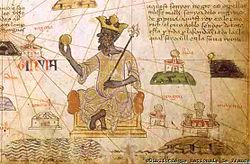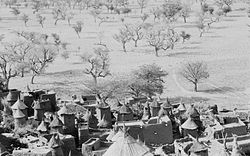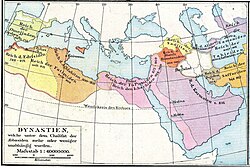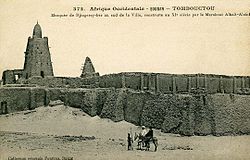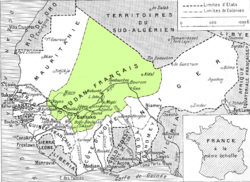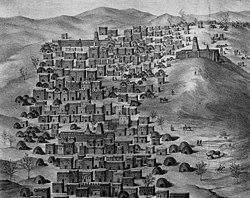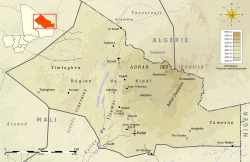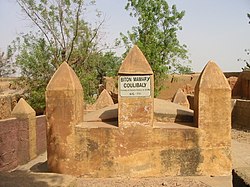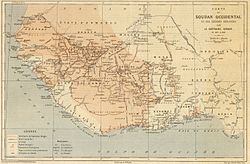Arabisch:
معراج الصعود الى نيل مجلوب السودان
The Ladder of Ascent in Obtaining the Procurements of the Sudan: Ahmad Baba Answers a Moroccan’s Questions about Slavery
title QS:P1476,ar:"معراج الصعود الى نيل مجلوب السودان"
label QS:Lar,"معراج الصعود الى نيل مجلوب السودان"
label QS:Les,"La escala del Paraíso en la obtención de adquisiciones del Sudán: Ahmad Baba responde las preguntas de un marroquí sobre la esclavitud"
label QS:Lfr,"L'échelle de l'ascension dans l'obtention d'acquisitions du Soudan : Ahmad Baba répond aux questions d'un Marocain à propos de l'esclavage"
label QS:Lpt,"A escada da ascenção na obtenção das aquisições no Sudão Ahmad Baba responde às perguntas de um marroquino sobre a escravidão"
label QS:Len,"The Ladder of Ascent in Obtaining the Procurements of the Sudan: Ahmad Baba Answers a Moroccan’s Questions about Slavery"
label QS:Lar,"معراج الصعود إلى نيل مجلوب السودان: أحمد بابا يجيب على تساؤلات المغاربة حول الرق"
label QS:Lzh,"购买苏丹奴隶的步骤:艾哈迈德·巴巴回答一位摩洛哥人有关奴隶的问题"
Größe:
900 x 1231 Pixel (7134075 Bytes)
Beschreibung:
Timbuktu (present-day Tombouctou in Mali), founded around 1100 as a commercial center for trade across the Sahara Desert, was also an important seat of Islamic learning from the 14th century onward. The libraries there contain many important manuscripts, in different styles of Arabic scripts, which were written and copied by Timbuktu’s scribes and scholars. These works constitute the city’s most famous and long-lasting contribution to Islamic and world civilization. Ahmad Baba ibn Ahmad ibn Umar ibn Muhammad Aqit al-Tumbukti discusses slavery as it existed in West Africa during the seventeenth century. The examination of the subject in Mi‘rāj al-Ṣu‘ūd ilá nayl Majlūb al-Sūdān (The ladder of ascent in obtaining the procurements of the Sudan: Ahmad Baba answers a Moroccan’s questions about slavery) is based on Islamic law and it is noted that the fundamental and original nature of humanity is that individuals are free. They may be enslaved only under certain very specific conditions governed by Islamic law.
Africa, West; Arabic calligraphy; Arabic manuscripts; Islamic law; Islamic manuscripts; Slavery; Timbuktu manuscripts
Weitere Informationen zur Lizenz des Bildes finden Sie hier. Letzte Aktualisierung: Mon, 17 Jun 2024 10:54:20 GMT
Relevante Bilder
Relevante Artikel
Geschichte Malis
Die Geschichte Malis umfasst die Entwicklungen auf dem Gebiet der Republik Mali und historischer malischer Reiche von der Urgeschichte bis zur Gegenwart. Die vorschriftliche Geschichte Malis reicht derzeit etwa 150.000 Jahre zurück, während schriftliche Quellen erst mit der Islamisierung ab dem 8. bis 11. Jahrhundert einsetzen. Dabei war die Besiedlung vor dem Beginn der produzierenden Lebensweise und auch lange Zeit danach in überaus hohem Maße von der stark schwankenden Ausdehnung der Sahara abhängig. Ab etwa 9500 v. Chr. stellten Jäger und Sammler Keramik her, später wurden Rinder domestiziert und Schafe und Ziegen aus Westasien eingeführt. Um 2000 v. Chr. lebte man im Süden des Landes ganz überwiegend vom Ackerbau, insbesondere von Hirse und anderen Grassamen; nach 800 v. Chr. kam Reis hinzu. Im Binnendelta des Niger entstand aus eigener Wurzel eine Stadtkultur um 300 v. Chr., wobei die Stadt Djenne-Djeno bis zu 33 ha groß wurde, der Dia-Komplex umfasste etwa 100 ha.
.. weiterlesen


